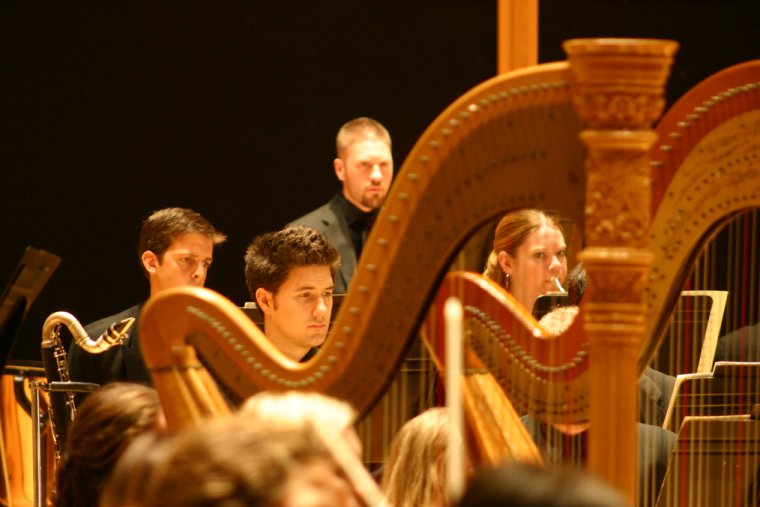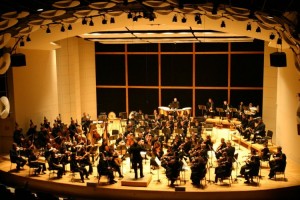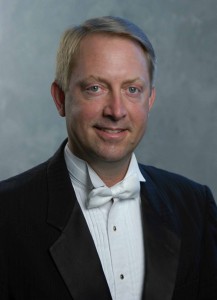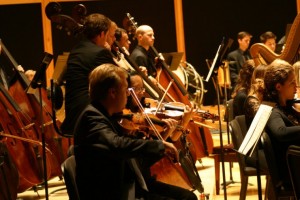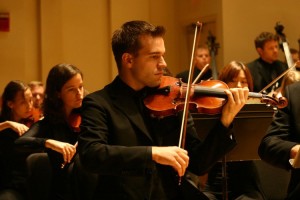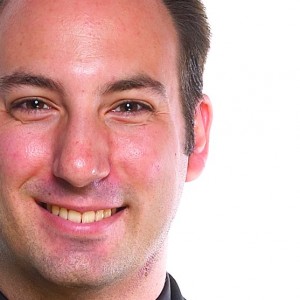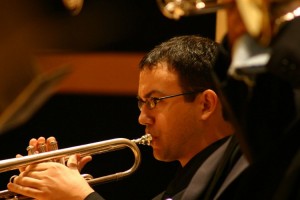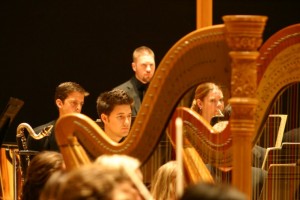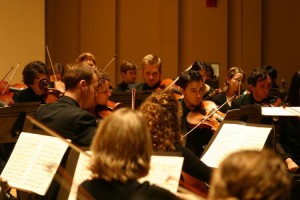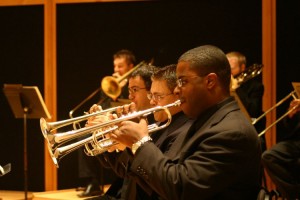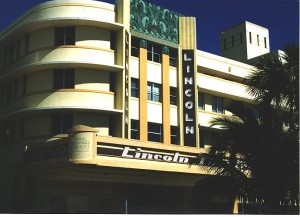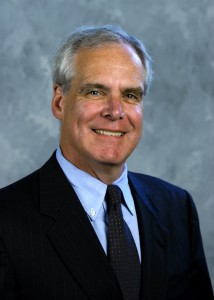New World Symphony, America’s Orchestral Academy
About the Ensemble
The New World Symphony, a post-graduate orchestral academy located in Miami FL, is celebrating its 20th anniversary season — Michael Tilson Thomas conducted the first NWS concert at the Lincoln Theatre on February 4, 1988.
According to the NWS website, the mission of the New World Symphony is to prepare highly-gifted graduates of distinguished music programs for leadership roles in orchestras and ensembles around the world.
The NWS has come a long way in 20 years:
- Their endowment, started by Ted Arison, founder of the Carnival Cruise Lines company, is healthy enough (over $75 million) to support 40% of their annual operating budget.
- Many NWS fellows hold prestigious jobs in professional orchestras throughout North America and elsewhere.
- A sold-out concert at Carnegie Hall last season, featuring guest artist Yo-Yo Ma, which garnered rave reviews.
- Tours to London, Paris, Amsterdam, Vienna, and Rome.
- The NWS has recorded 7 CDs under a special arrangement with the American Federation of Musicians: Tangazo featuring Latin-American classics, conducted by Michael Tilson Thomas (affectionately known as MTT), in 1993; Four Parables, with John Nelson conducting music of the American composer Paul Schoenfield in 1994; Defining Dahl: The Music of Ingolf Dahl with MTT in 1995; the music of Villa-Lobos (featured in this spotlight) with MTT in 1997; and New World Jazz with MTT in 1998. Upcoming releases on Argo/Decca include Coptic Light, music of Morton Feldman led by MTT, and Amy Beach’s piano concerto with soloist Alan Feinberg and conductor John Nelson.
- Frank Gehry is designing a new campus for them, in consultation with Yasuhisa Toyota of Nagata Acoustics and Theatre Project Consultants, that should begin construction by the end of the year. It will house a 700-seat concert hall and several smaller performance spaces, all designed to meet the needs of the 87 fellows. And the building itself will make a grand statement about the NWS to the greater Miami community.
The NWS regularly attracts top-quality guest conductors, guest artists, and mentors. This season’s roster includes Itzhak Perlman, Gil Shaham, Oliver Knussen, and the Orion String Quartet, among many others. The NWS makes extensive use of Internet2 to enable their fellows to work with world-class musicians remotely, and even hosts an annual Internet 2 workshop.
And the fellows’ training is not just orchestral performance and individual lessons in their instruments. The NWS provides intensive training in how to take auditions, in community engagement and public speaking skills, and in musical entrepreneurship. The success of the NWS fellows in winning auditions is proof of the success of the organization. But they also seem dedicated to turning out professional orchestral musicians who are pleased to be playing in orchestras and who will be a positive influence on those orchestras.
To quote from Howard Herring, President and CEO (see page 5 of this spotlight for his full interview), “We seek to shape musician-leaders who are ready for the musical and institutional responsibilities of the orchestras in which they will perform and the larger communities where they will live and work… We hope they will be inventive, creative, and positive influences in their artistic lives, fulfilled as artists and contributors to orchestras and society at large.”
Read on to learn more about this unique organization!
Ann Drinan, Senior Editor, November 2007
An Interview with Michael Linville, Dean of Musicians
Ann Drinan: Where do your fellows come from?
Michael Linville: Our students come from all over the world but primarily from the major music schools of North America. In many cases, foreign students come to the US to do graduate work after having done their undergraduate work in their home countries. They then audition for the New World Symphony after that. We typically hear 1,000 auditions annually to fill 30-35 openings. At the moment, we’re holding auditions in 22 cities in North America in the winter and early spring, and another five at summer festivals. All of our musicians have at least a bachelor’s degree.
AD: Who listens to all those auditions?
ML: Our Director of Admissions, Tom Hadley, listens to the auditions – he was a horn player during NWS’ first two seasons, and played in the Florida Philharmonic for 12 years after leaving NWS. He then left to become personnel manager of the Baltimore Symphony, and then came back here. We have one additional panelist for each audition, but the second panelist (almost always a NWS alumnus) rotates. I hear about 1/3 of the auditions.
AD: How many fellowships do you have? How many for each instrument?
ML: We have 87 fellowships – full orchestra strings, triple winds, 5 horns, 3 trumpets, 3 trombones, tuba, timpani and 4 percussionists, harp, and 2 pianists. In addition we have a conducting fellow, a library fellow, and an audio engineer fellow.
AD: NWS must be unique in having a training program for orchestra librarians!
ML: Civic [Orchestra of Chicago] might have a library fellow also, or they might have an internship, but other than the occasional orchestra that has an intern in the library, we’re pretty unique in that way. We do have a staff librarian, Martha Levine, who mentors the library fellow.
AD: What about the audio engineer fellow?
ML: The audio fellow is mentored by outside sources. He or she reports to the Director of Operations, but we set up different mentoring possibilities. They attend the Audio Engineering Society Convention every year and, if another orchestra is doing a recording project, they’ll watch or assist. Their duties here are to record all the concerts and help our fellows make tapes for auditions and competitions.
ML: What is a typical day for a fellow? What does the schedule look like?
ML: Each day is a little different. If the orchestra has two rehearsals, that will be the day; individuals might have a master class or private lesson in addition. If there’s only one rehearsal, a fellow might have community engagement or professional development activities. We have a series of lectures, clinics and workshops that are not directly music-related but involve public speaking, media training and presentations from senior executives from other orchestras and music festivals. For example, Henry Fogel from the League spoke last month, and Alan Fletcher from Aspen is coming in December.
We also have training in community engagement with different teachers or individuals we bring in. Susan Stauter from the San Francisco Unified School District visits every year – she co-created the Arts Education program in San Francisco where every student is exposed to some kind of art every day of the school year. This year we have Susan Helfter from the Midori Center in LA – she’s been focusing on how to target different age groups in community engagement.
During a week, the fellows have 5 or 6 rehearsals. Last week was a new music concert, so we had 8 rehearsals. Both living composers joined us: Steven Mackey and Charles Wuorinen.
We have three different series of chamber music: a standard series on Sunday afternoons, Musical Xchanges, where the fellows discuss the music they’ll play – they get communication coaching on how to address their audiences; and the Musicians’ Forum series, where the fellows produce the concerts themselves – they choose the repertoire, prepare the program, and get involved in marketing the concerts.
We have one week of Baroque music and performance practice, and the percussion group gives two concerts every season.
AD: How do you support the fellows? I understand they don’t receive a salary.
ML: The fellows receive a stipend to cover their living expenses and NWS provides year-round furnished housing.
AD: Tell me about your use of Internet2.
ML: We use Internet2 in a wide variety of ways. If we want to perform a piece by a living composer who’s not able to come to Miami, we’ll connect with the composer for rehearsals and concerts. We arrange individual private lessons with teachers, offer master classes in both directions – sometimes the teacher is remote or sometimes we’ll have a teacher here and we’ll send the picture and sound out to other music schools. Occasionally a student from another school will play for a teacher here.
We use Internet2 to interact with major conducting programs around the country during conducting workshops. We use Internet2 just about any time we need to do video conferencing – if we need to chat with Frank Gehry about our new building, we’ll connect with him in LA. Sometimes Michael Tilson Thomas (MTT) will do his opening address to the fellows over Internet2, if he’s required to be in San Francisco. We use it every possible way you can imagine.
Our stage is completely wired with robotic cameras and Internet2 capability, and three of the larger practice rooms on the 2nd floor are also permanently wired for Internet2 capability. We now have enough bandwidth that we can even do simultaneous events from different venues.
We host an annual, national Internet2 workshop, usually in late January but this year it’s February 11 – 13. People can come in and see demos – we set up stations where the focus is on the actual equipment: DVTS, which is a more high-def connection, and PolyCom devices, which are easier to use and don’t require as much bandwidth. We give hands-on workshops on how to set them up, how best to light events, which kinds of microphones work best, microphone placement, echo cancellation, and so on. For more information, your readers can refer to the Internet 2 website at http://events.internet2.edu/2008/nws/.
AD: You’re not a professional orchestra, yet you make quite a few recordings. Are the fellows paid below AFM union scale for these recordings?
ML: No. We have an agreement with the American Federation of Musicians whereby our fellows are paid the same as professional orchestral musicians for their participation in recordings. We have an EMG [Electronic Media Guarantee], which is amortized over the entire season and which the fellows receive in addition to the weekly stipend. If we do more media than the EMG would cover, we pay them the additional amount.
AD: Some musicians have laid some blame for the demise of the Florida Philharmonic on the NWS. Would you care to comment?
ML: We were all very saddened when the Philharmonic folded because we had over 20 alumni in that orchestra. Many of those musicians had moved directly from NWS to the FPO and suddenly were unemployed. We also really miss having a first-rate professional orchestra in the area. Since they closed their doors, South Florida doesn’t have anything to fill out the classical music scene as only a full-season professional orchestra can do. We always felt that the Philharmonic’s being here helped give a certain cultural depth to this area, particularly as they performed all around South Florida. There’s a vacuum now.
AD: Did the two orchestras share the same audience?
ML: We didn’t have the same audience – we only do 3 or 4 concerts at the Carnival Center (the Philharmonic’s intended new hall). We make careful considerations of soloists and repertoire for the Carnival Theater concerts. But for concerts at the Lincoln Theatre, the focus is almost exclusively on the educational experience for our musicians. We’re not as market-driven as most orchestras have to be, so we’re able to present concerts that standard orchestras would never be able to consider doing because of ticket sale pressures.
AD: What is the most exciting aspect of your work at NWS?
ML: I get the greatest sense of satisfaction from knowing that the work we do at our academy has helped so many wonderful musicians get a leg up in the business. The experience here is one that these young musicians will remember fondly for the rest of their lives, and the relationships they develop with each other and with the coaches, conductors, and soloists who pass through have lasting impact and influence on their careers.
An Interview with Andrew Wickesberg, NWS Violist and Fellow
Ann Drinan: Tell me a bit about yourself – where did you grow up and where did you go to school?
Andrew Wickesberg: I’m originally from Madison WI, and wound up in Champaign/ Urbana IL where my parents work at the University. For my undergraduate degree, I went to Indiana and studied with pretty much everybody who I could find to teach me. I did a double major on violin/viola, and studied with viola with Atar Arad and Alan de Veritch. I did my violin studies with Henryk Kowalski and Paul Biss. It was an interesting mix of teaching and playing styles. I graduated in 2003, and stayed a year to work on a performance diploma. In 2004 I went to NEC [New England Conservatory] for my Masters, and studied with Marcus Thompson for 2 years. Then I auditioned for the New World Symphony, right at NEC, and am now in my second year.
AD: What got you interested in NWS?
AW: It has such a fantastic reputation as being not only a great orchestra but also a great place to learn how to be an orchestra musician. I also had a couple of friends there – when I arrived, 5 out of the 10 violists in the section had been in school with me at Indiana – remarkable! Several other people I knew before are still down here. So I knew about the NWS from them and I knew it was a great place to be. I never took a professional audition while in school because I knew I wasn’t ready. If I wanted to take a professional audition without worrying about logistics: how to get there, what to do about gigs, etc., NWS was the best place for me. You have the freedom to go out and take an audition, and you get trained in taking auditions through mock auditions and feedback from members of really big orchestras. This week we’re having an audition training seminar with two mock auditions and lessons in-between for everyone in the orchestra. For the violists, Cynthia Phelps [principal violist with the NY Philharmonic] is in town and sitting on a mock audition panel with Carter Brey [principal ‘cellist with the NY Philharmonic]. In between we have lessons with Cynthia – all sponsored by New World Symphony. It doesn’t cost us a dime. It’s really a unique and remarkable place.
AD: Tell me about your experience as a fellow. Where do you live, and what’s your schedule like?
AW: I was talking to Michael [Tilson Thomas] the other day and we talked about Koussevitzky’s original idea for the BSO [Boston Symphony Orchestra]. Koussevitzky wanted to build a giant apartment block where the entire orchestra would live in the same place. Here at New World Symphony, one of the benefits of the fellowship is that NWS gives you a place to live. They own two renovated hotels on Miami Beach, four blocks from Lincoln Theatre. The entire orchestra lives in those two hotels – we have studio efficiency apartments with kitchen, bath, closet. They’re very small but it’s great. We have enough space to live and work.
It does make for intense inter-personal relationships because you see the same people at work and at home. It’s somewhat like a summer festival – very exciting all the time, especially when Michael is here. He’s here about the same number of weeks as he’s in San Francisco – 10 weeks each place. We just finished a 5-6 week session with him; they were intense weeks.
Most of the time, our schedule is fairly comparable to that of a professional orchestra. We have usually six rehearsals before a concert: one rehearsal on Tuesday, two on Wednesday, two on Thursday, dress on Friday morning, and concerts on the weekend. We pretty much have concerts every weekend. Sometimes it’s just a chamber orchestra series, which doesn’t involve the whole orchestra.
AD: Do you play any chamber music?
AW: We do have a chamber music series – Scott Nickrenz is the director of the chamber music series – we do 6 concerts a year involving all different kinds of ensembles: string quartets, woodwind quintets, etc. The first one we did this year was in collaboration with the Orion String Quartet. One of the violinists led the strings in the orchestra in the Holberg Suite, a few people collaborated with the entire quartet to perform the Mendelssohn Octet, and the Nielsen woodwind quintet started the program.
AD: How about new music?
AW: We do a lot of new music – it’s a big part of the original idea of New World Symphony: new ideas and new music to spearhead the way into the 21st century and now into future.
We just finished an all 21st century program, with all relatively new music. We did the Morton Feldman piano concerto with Jeremy Denk, the Charles Wuorinen ‘cello concerto with Fred Sherry, and a piece written to commemorate the 2006 opening of the Carnival Center in Miami, Turn the Key by Steven Mackey.
The audience was quite enthusiastic – we have a very committed audience here for New World Symphony. This is our 20th anniversary season and some of the audience members have been with us all those years and remember what we played on the first concert. It’s a unique environment, similar to the appreciation the TMC [Tanglewood Music Center] enjoys. I was a fellow at Tanglewood for two years and was so impressed by the enthusiasm of the audience. It’s the same down here. In some cases it’s the same audience.
AD: You said this was your second year. Do you have to leave at the end of this season?
AW: Three years is the set limit. So we have 20-30 new people each year. It’s fun to see how the sound of the orchestra changes each year, and to see how the fellows react to the new people.
AD: What are your plans/hopes for the future?
AW: I would love to get a job in a top 10 orchestra – my plan is to take lots and lots of auditions until I get the job I’m supposed to have. Auditions depend heavily on your level of preparation, but the difference between getting a job or not depends on how well you play on a particular day. At a certain point, you’re going to play well on the right day at the right place and you’ll wind with the job you’re supposed to have. You can go to an audition and know that you played well but you don’t advance. You need to be able to explain to yourself why you didn’t advance or win.
AD: That’s a great way to look at auditioning! It really does matter how prepared you are mentally, doesn’t it?
AW: It does indeed, and here at New World Symphony we are very conscious of that. Every year we bring performance psychologist Don Greene down to speak about the mental aspect of audition preparation and performance. Dr. Green has worked with Olympic divers and professional golfers on improving their performance through mental training. He does a lot of work with us on the psychology of performance and how you train your mind to audition well.
AD: So many professional musicians feel somehow betrayed when they don’t win that big audition.
AW: NWS is really committed to producing musicians who are happy doing what they do – our alumni are positive influences on their orchestras and their community. We talk a lot about community engagement; we have meetings for the whole orchestra to interact with well-known people related to community engagement. We learn about public speaking, ensemble engagement, etc. We go out to new orchestras with a whole different skill set and level of expectation about what we need to do to make our orchestra a better place.
AD: How many of your classmates have landed jobs in major orchestras?
AW: It’s really astounding – I’m sure I’m going to forget several. In the past six months, 6-7 people have won jobs in an ICSOM or OCSM orchestra. Principal ‘cello in Memphis, bass position in Colorado, violinist in the Vancouver Symphony, 3rd chair viola in North Carolina. It’s a regular occurrence that people do very well and win jobs.
AD: Would you recommend NWS to others? What advice do you have for recent conservatory graduates?
AW: Absolutely! New World Symphony is a fantastic place to hone your skills as an orchestral musician, while also developing skills that will make everyone’s experiences with an orchestra better. At this point in my life, I don’t feel that I should be giving advice, but I can definitely say that after graduating from conservatory, I always try to keep raising the bar for my playing. Seeking out new and challenging musical endeavors always seems to help me attain a higher level of playing, which I believe will help me win a job I will be content in for the rest of my life.
AD: Best of luck with your auditions, Andrew!
PostScript: On Sunday November 18, Andrew won a position in the viola section of the Pittsburgh Symphony.
An Interview with Douglas Merilatt, Senior Vice President of Educational and Artistic Programs
Ann Drinan: What is your concert schedule like?
Douglas Merilatt: Our program season runs for 35 weeks from early September until early May. Most weeks include the preparation and performance of one orchestra program (sometimes performed more than once) or of multiple programs involving fewer musicians. A few weeks don’t include any performances and are instead devoted exclusively to other types of musical training and professional development activities. Our concert mix is much more varied than is typically the case at professional orchestras.
In addition to orchestra concerts, we have an active chamber music program; concerts solely of new music for orchestra and ensembles; and concerts for string orchestra, woodwind ensemble, brass ensemble and percussion ensemble. The fellows themselves organize and present their own series of six concerts—mostly of chamber music, but sometimes works for small orchestra—for which they do the programming. Our schedule involves more rehearsals than at a professional orchestra, but fewer, and over a shorter period, than would be so with a conservatory orchestra.
AD: How much time does Michael Tilson Thomas spend with the NWS? What is his involvement in artistic decision-making? How involved is he with the fellows?
DM: Since he created the New World Symphony, MTT has always been substantially involved in all aspects of the fellowship program and the organization behind it. He is resident for ten weeks each season—for a conductor of his echelon, this itself reflects an extraordinary commitment to the cause of music education—and we’re in frequent contact with him at other times. As the organization’s Artistic Director, Michael personally reviews and approves almost everything of an artistic nature.
The extent of Michael’s personal involvement and interaction with the fellows is one of the most important dimensions of our program. He leads an annual round of audition master classes at which every first-year fellow performs for and receives coaching from him, and there are many other occasions and settings throughout the season when he works with and mentors the fellows individually or in small groups. Michael is the consummate musical educator and the ultimate communicator about music and its traditions. His own development was shaped by the influence of performers and composers who took an interest in him as a young musician, and he himself is now determined to share his own knowledge and experience with the next generation. His formation and leadership of the New World Symphony are part of the same continuum.
AD: How many guest conductors do you have? Who determines the season’s programming?
DM: In addition to MTT’s role as Artistic Director, we also have a Principal Guest Conductor, Alasdair Neale, who is here several weeks each season in various performance and educational capacities. As well, each season typically includes 10-12 other guest conductors. As the organization’s reputation and quality have grown over the years, we’ve been fortunate to develop ongoing relationships with a number of today’s most accomplished conductors—several of them music directors of major American orchestras—as well as solo artists and composers. I should emphasize that we select our guests not only for their superb artistry, but for their experience and aptitude in working with young musicians within a mentoring and pedagogical environment. Almost all of our guests participate in some type of educational or professional development activity in addition to rehearsals and concerts. For this reason, we’re much more inclined to invite well-seasoned solo instrumentalists, for example, than ones no older than our fellows.
MTT of course selects the content of his own programs and approves that suggested by the guest conductors, with whom I work to formulate proposals for his consideration. We also have a Chamber Music Advisor, Scott Nickrenz, who develops many of our chamber music programs and coaches the preparation of them with the involvement of visiting artists.
AD: Could you share a few highlights of last season?
DM: A top highlight of last season was the orchestra’s return to Carnegie Hall for two performances under the Hall’s presentation. The first of these, which featured Yo-Yo Ma as soloist, sold out and garnered some of the strongest reviews in the institution’s history. The other concert at Carnegie involved a new performance format—a Discovery Concert, as it was called—that focused on a single work of music, the Shostakovich Fifth Symphony. The work’s history and content was explained by MTT in detail during the first half, which also featured a continuous, originally-produced video of imagery and illustrations complementing Michael’s remarks. Another highlight of last season was the successful launch of what will be an annual short series of concerts at Miami’s new Carnival Center for the Performing Arts. The season also included our first-ever webcast of an orchestra concert.
AD: Tell me about your tours, past and future.
Touring has been a part of the program since the beginning. As with a professional orchestra, these experiences serve to promote the organization’s reputation for quality while artistically solidifying the ensemble. In our case, touring also provides the fellows with real-life experience in facing the unique demands of life on the road and learning to perform at their best while adjusting to the different conditions presented by unfamiliar venues.
Last season’s performances at Carnegie Hall followed on a set of appearances there three seasons earlier. It’s our hope to return to Carnegie once every few years. Internationally, during my tenure at NWS, the orchestra has toured to London, Paris, Amsterdam, Vienna and Rome. This season a quintet of musicians from the orchestra gave a concert at the Shanghai International Arts Festival, marking the organization’s debut appearance in China. Stay tuned for news of an extended international project that will take place next year.
AD: Describe your concert venues—the Lincoln Theatre, Carnival Center for the Performing Arts, and the upcoming new campus designed by Frank Gehry.
DM: Almost all of our program activities, including the public performances, take place at the Lincoln Theatre, which was built as a cinema in the 1930s. MTT aptly likens it to a one-room schoolhouse, one which, given the scope of our program, we long ago outgrew. The exterior and lobby of the Lincoln are charming and historic, but its simply-renovated auditorium lacks complete sound isolation, acceptable acoustics, and sufficient mass to accommodate the volume of sound produced by a large orchestra. We have a modest number of cramped, acoustically inadequate practice rooms for use by the fellows, but the building altogether lacks proper rehearsal, teaching and classroom spaces. The only space in the building that is large enough for ten or more musicians to comfortably rehearse is the stage itself, although we sometimes use our lobby for seminars and coaching purposes.
Carnival Center’s Knight Concert Hall, which opened with a performance by MTT and the orchestra last season, is an acoustically superior venue, to be sure. We presented a series of three high-profile concerts there last season and are doing much the same this season. However, while periodically performing in a new and commodious hall has its advantages, many of our concerts are of a specialized programmatic nature and unsuitable for presentation in such a large venue—acoustically attractive as Knight Concert Hall has turned out to be.
The new campus designed by Frank Gehry is the future of the New World Symphony. It will have a small, superb concert auditorium—acoustically designed by Yasuhisa Toyota of Nagata Acoustics—with a 700-seat capacity, which is a perfect size for most of the programs we present. Some of the seating will be telescopic, so the room can be configured differently for other types of performances and events. The auditorium was imagined as a laboratory for musical expression and will be extensively outfitted with theatrical lighting and projection technology, which we’ll use to enhance and modernize our concert presentations. One of the interesting features of the auditorium will be its four small satellite stages, which will surround the main platform and enable us to present programs that easily juxtapose orchestral and chamber music without time-consuming stage changes. The building will have a selection of properly-designed rehearsal, teaching and practice rooms. All of these rooms will be wired for Internet2, enabling the routine use of that advanced communications technology in every dimension of our program.
AD: Tell me about the non-musical aspects of the fellows’ training.
DM: These increasingly important components of our program continue to grow in number and depth. Michael Linville, our Dean of Musicians, is responsible for their creation. Among them, he organizes a series of public speaking seminars designed to build the fellows’ communications skills. Certain of these are oriented to relating to different age groups and communities. We present a short series of concerts, entitled Musical Xchanges, at which the fellows are expected to speak and introduce the works they are performing. Community engagement is a foremost emphasis at NWS. All of the fellows receive substantial training in various dimensions of community engagement and are expected to participate in some form of it, one of which is an active mentoring program involving younger musicians in the area. Michael also organizes a series of speakers who address the fellows on topics pertinent to their futures in the orchestra profession.
AD: Any final thoughts?
Only a personal one, which is that, 12 years into my experience at New World, I continue to be enormously gratified by the positive contribution that this organization plays in perpetuating the art form all of us love. It’s wonderful to be part of the work that goes on here. This is a purposeful, bright-spirited and futuristically-minded place. With the advent of our new building, the New World Symphony’s effect and influence can only grow.
An Interview with Howard Herring, President and Chief Executive Officer
Ann Drinan: Where do you see the NWS in 10 years? Pretty much the same as today or do you envision major changes?
Howard Herring: The New World Symphony has a specific mission that will not change in the decade to come. We prepare our fellows to be musician leaders using an experiential curriculum, while creating an environment in which fellows and stakeholders become partners in realizing a vibrant future for classical music.
However, we will be moving from our one-room “schoolhouse” into a forward-looking educational facility that will satisfy our educational, rehearsal and performance needs, in addition to inviting creative uses of digital media.
Currently, we are also exploring the uses of the Internet to create a dialogue for classical music, via webcasts and other initiatives. We believe that the Internet will become a global meeting house for classical music, which we will be a part of, through our programs.
AD: Tell me about the new hall you’re building. It must be very exciting to be working with Frank Gehry. How collaborative was the design process? Do you know what the new building will look like? How it will function for your school?
HH: Prior to the design work, Michael Tilson Thomas and the staff spent several years envisioning institutional development. From that visioning process, and in collaboration with Theatre Project Consultants, we created a program for our new building, and designed the rooms and spaces according to their anticipated function. From that plan, Frank Gehry began to conceive our new campus. We focus the majority of our attention on the 87 fellows of the New World Symphony, so Frank satisfied the demands of the fellows first. Since we also play for the public, his second challenge was to focus the building externally, making it intriguing and inviting to the public. Frank, MTT, the Gehry team, our team, the Hines team (our project managers)… all of us worked together to form the concept and design. We are very proud of the educational functionality of the building and its public façade. The campus is an expression of our dual focus, inwardly on the fellows, and outwardly, engaging the public.
AD: How are the NWS finances? I understand you started with the wonderful support of Carnival Cruise Lines founder Ted Arison. How do you envision your financial support going forward into the next decade? What is your endowment?
HH: The New World Symphony is the beneficiary of the extraordinary generosity of Ted Arison. Ted created the initial endowment, and since that time others who have wanted to create a lasting legacy have directed their gifts to the endowment. Forty percent of our operating costs are satisfied with the annual 5% draw on the endowment, forty-five percent comes from annual contribution, and the remaining 15% from ticket sales. The endowment allows us to be experimental; the annual fundraising and ticket sales keep us in touch with our audiences. It is a remarkably productive economic structure.
AD: What role does the NWS play in the world of professional orchestras?
HH: We are an orchestral academy, working in the middle ground between academic and professional life. We bring 87 fellows into an atmosphere of exploration where all are encouraged to seek a path toward individual growth while combining their creative energies with their colleagues. We seek to shape musician-leaders who are ready for the musical and institutional responsibilities of the orchestras in which they will perform and the larger communities where they will live and work. The fellows spend three years at our academy, some leaving for jobs prior to the end of their three-year fellowships. We hope they will be inventive, creative, and positive influences in their artistic lives, fulfilled as artists and contributors to orchestras and society at large.

